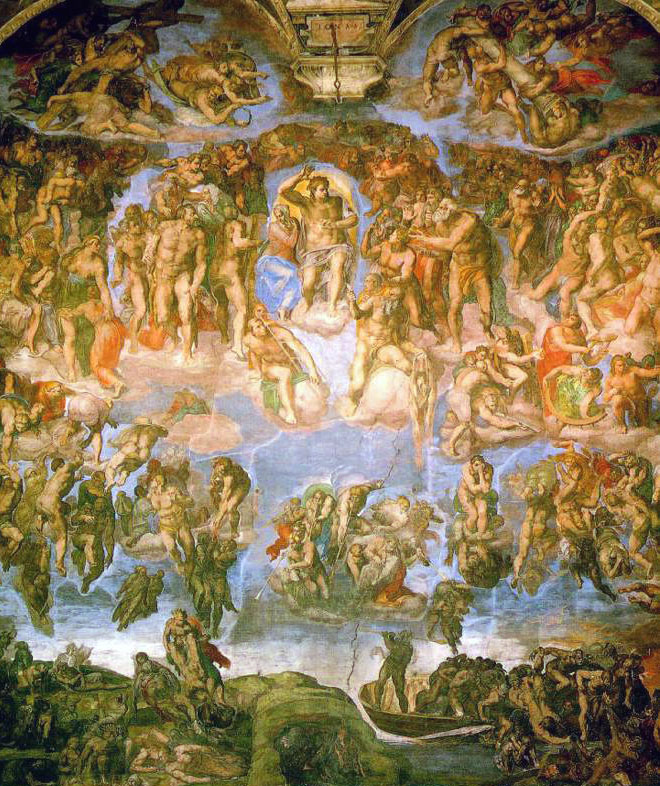I'm back to working, and I have projects among projects among projects to do. Many of the type I WILL NOT be doing any more ie: logos, designs, so on and so forth because its getting quite time consuming.
Since I have been looking for inspiration for next show, I've been looking at the Rennaissance, especially the High Rennaissance for ideas. I want everything in gold though, a material that I feel is symbolic of legend, legacy, and fame. I also came across the satyrical story of Michelangelo's "Last Judgement" fresco which was a very interesting read.
I was also intrigued by the Palace of Versailles (especiually since Murakami's work was featured there).
Since I have been looking for inspiration for next show, I've been looking at the Rennaissance, especially the High Rennaissance for ideas. I want everything in gold though, a material that I feel is symbolic of legend, legacy, and fame. I also came across the satyrical story of Michelangelo's "Last Judgement" fresco which was a very interesting read.
The Last Judgement
"The Last Judgment is a fresco by Michelangelo on the altar wall of the Sistine Chapel in Vatican City. It took four years to complete and was executed from 1537 to 1541. Michelangelo began working on it three decades after having finished the Sistine Chapel ceiling.
The work is massive and spans the entire wall behind the altar of the Sistine Chapel. It is a depiction of the second coming of Christ and the apocalypse. The souls of humans rise and descend to their fates, as judged by Christ surrounded by his saints.
The Last Judgment was an object of a heavy dispute between Cardinal Carafa and Michelangelo: the artist was accused of immorality and intolerable obscenity, having depicted naked figures, with genitals in evidence, inside the most important church of Christianity, so a censorship campaign (known as the "Fig-Leaf Campaign") was organized by Carafa and Monsignor Sernini (Mantua's ambassador) to remove the frescoes. When the Pope's own Master of Ceremonies, Biagio da Cesena, said "it was mostly disgraceful that in so sacred a place there should have been depicted all those nude figures, exposing themselves so shamefully," and that it was no work for a papal chapel but rather "for the public baths and taverns," Michelangelo worked Cesena's face into the scene as Minos, judge of the underworld (far bottom-right corner of the painting) with Donkey ears (i.e. indicating foolishness), while his nudity is covered by a coiled snake. It is said that when Cesena complained to the Pope, the pontiff joked that his jurisdiction did not extend to hell, so the portrait would have to remain.[1]
The genitalia in the fresco were covered 24 years later (when the Council of Trent condemned nudity in religious art) by the artist Daniele da Volterra, whom history remembers by the derogatory nickname "Il Braghettone" ("the breeches-painter"). In the painting, Michelangelo does a self portrait depicting himself as St. Bartholomew after he had been flayed (skinned alive). This is reflective of the feelings of contempt Michelangelo had for being commissioned to paint "The Last Judgement".[2] The figure of St. Bartholomew depicts the satirist and erotic writer Pietro Aretino who had tried to extort a valuable drawing from Michelangelo."
I was also intrigued by the Palace of Versailles (especiually since Murakami's work was featured there).

